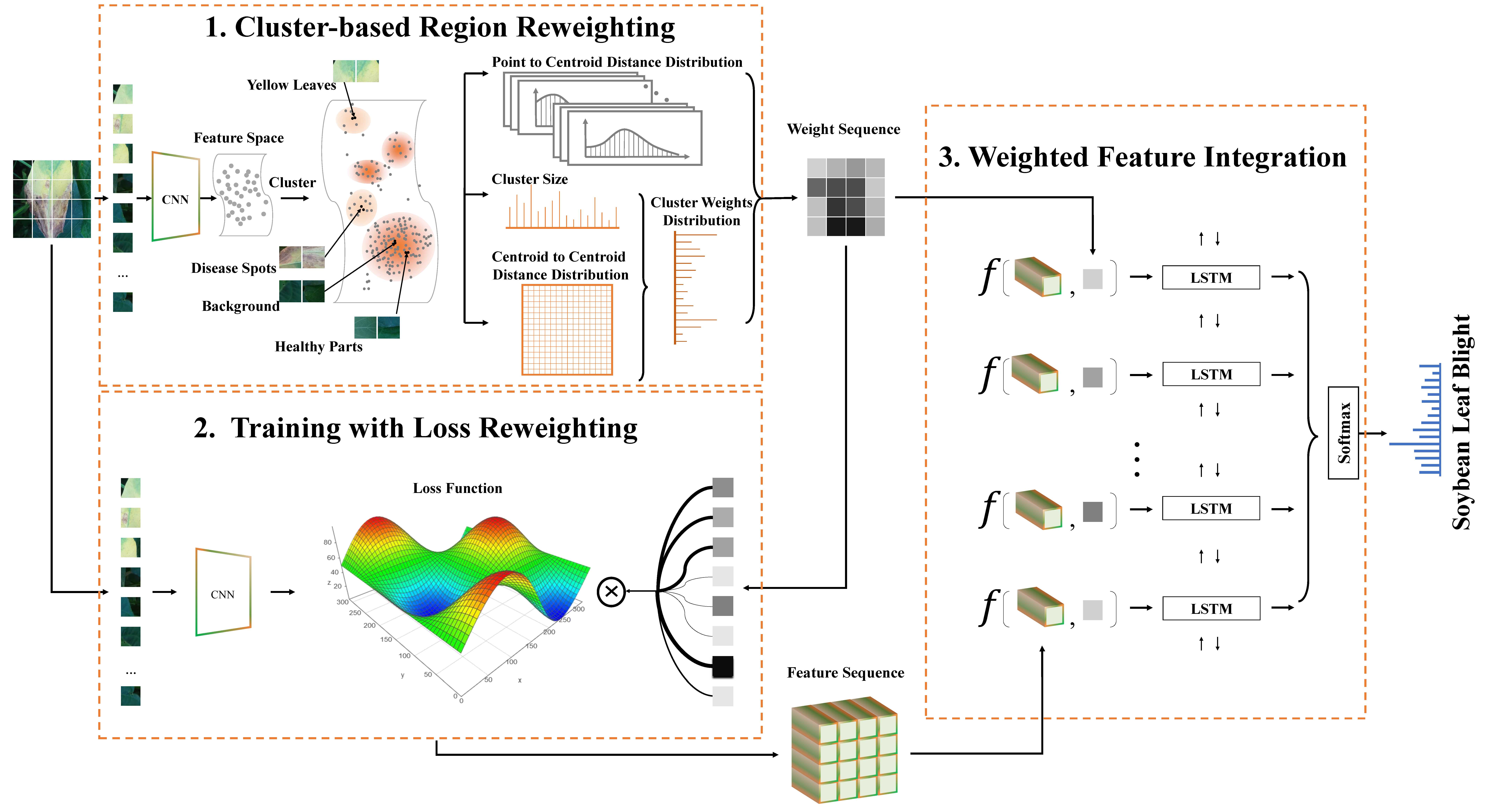
每年,全球高达40%的粮食作物因病虫害而遭受损失。这导致每年的农业贸易损失超过2200亿美元,数以百万计的人们陷入饥饿。近年来图像处理技术特别是深度学习的发展为病虫害识别提供了新的可行方案,但由于缺乏系统分析和足够的数据量支撑,研究并没有形成应有的规模。本文系统分析了在计算机视觉视角下的病害识别问题面临的挑战,收集了一个包含271类病害、超过22万张图像的数据集,提出了重新加权视觉区域和损失以强调患病部位的方法。该方法从图像和特征两个层次对强化患病位置的影响力,同时通过拆分和重组兼顾全局和局部信息。我们在提出的数据集和另一个公共数据集上进行了大量评估证明该方法的优势。我们希望这项研究将进一步推动图像处理领域中植物病害识别的进程。
Abstract
Plant disease diagnosis is very critical for agriculture due to its importance for increasing crop production. Recent advances in image processing offer us a new way to solve this issue via visual plant disease analysis. However, there are few works in this area, not to mention systematic researches. In this paper, we systematically investigate the problem of visual plant disease recognition for plant disease diagnosis. Compared with other types of images, plant disease images generally exhibit randomly distributed lesions, diverse symptoms and complex backgrounds, and thus are hard to capture discriminative information. To facilitate the plant disease recognition research, we construct a new large-scale plant disease dataset with 271 plant disease categories and 220,592 images. Based on this dataset, we tackle plant disease recognition via reweighting both visual regions and loss to emphasize diseased parts. We first compute the weights of all the divided patches from each image based on the cluster distribution of these patches to indicate the discriminative level of each patch. Then we allocate the weight to each loss for each patch-label pair during weakly-supervised training to enable discriminative disease part learning. We finally extract patch features from the network trained with loss reweighting, and utilize the LSTM network to encode the weighed patch feature sequence into a comprehensive feature representation. Extensive evaluations on this dataset and another public dataset demonstrate the advantage of the proposed method. We expect this research will further the agenda of plant disease recognition in the community of image processing.

Xinda Liu, Weiqing Min, Shuhuan Mei, Lili Wang, Shuqiang Jiang. “Plant Disease Recognition: A Large-Scale Benchmark Dataset and a Visual Region and Loss Reweighting Approach”, IEEE Transactions on Image Processing (TIP), 2021.
Download: